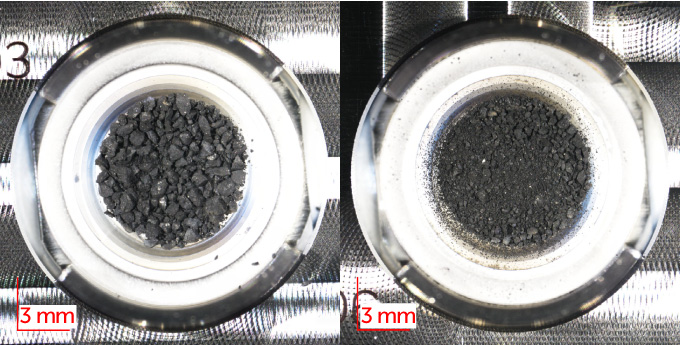This post was originally published on this site
Uracil, a building block of life, has been found on the asteroid Ryugu.
Yasuhiro Oba and colleagues discovered the precursor to life in samples collected from the asteroid and returned to Earth by Japan’s Hayabusa2 spacecraft, the team reports March 21 in Nature Communications.
“The detection of uracil in the Ryugu sample is very important to clearly demonstrate that it is really present in extraterrestrial environments,” says Oba, an astrochemist at Hokkaido University in Sapporo, Japan.
Uracil had been previously detected in samples from meteorites, including a rare class called CI-chondrites, which are abundant in organic compounds. But those meteorites landed on Earth, leaving open the possibility they had been contaminated by humans or Earth’s atmosphere. Because the Ryugu samples were collected in space, they are the purest bits of the solar system scientists have studied to date (SN: 6/9/22). That means the team could rule out the influence of terrestrial biology.
Oba’s team was given only about 10 milligrams of the Ryugu sample for its analysis. As a result, the researchers were not confident they would be able to detect any building blocks, even though they’d been able to previously detect uracil and other nucleobases in meteorites (SN: 4/26/22).
Nucleobases are biological building blocks that form the structure of RNA, which is essential to protein creation in all living cells. One origin-of-life theory suggests RNA predated DNA and proteins and that ancient organisms relied on RNA for the chemical reactions associated with life (SN: 4/4/04).

The team used hot water to extract organic material from the Ryugu samples, followed by acid to further break chemical bonds and separate out uracil and other smaller molecules.
Laura Rodriguez, a prebiotic chemist at the Lunar and Planetary Institute in Houston, Texas, who was not involved in the study, says this method leaves the possibility that the uracil was separated from a longer chain of molecules in the process. “I think it’d be interesting in future work to look at more complex molecules rather than just the nucleobases,” Rodriguez says.
She says she’s seen in her research that the nucleobases can form bonds to create more complex structures, such as a possible precursor to the nucleic acid which may lead to RNA formation. “My question is, are those more complex structures also forming in the asteroids?”
Oba says his team plans to analyze samples from NASA’s OSIRIS-REX mission, which grabbed a bit of asteroid Bennu in 2020 and will return it to Earth this fall (SN: 10/21/20).
